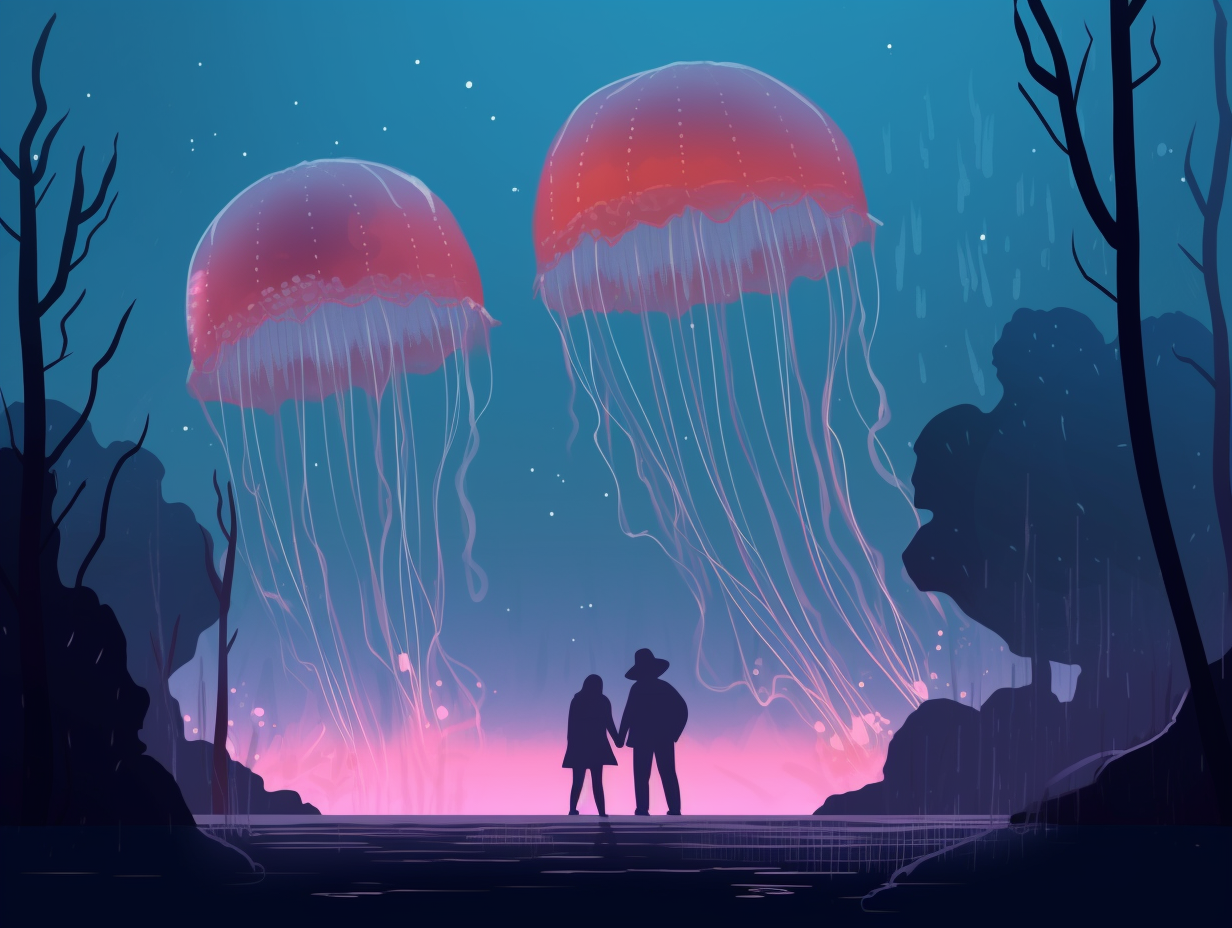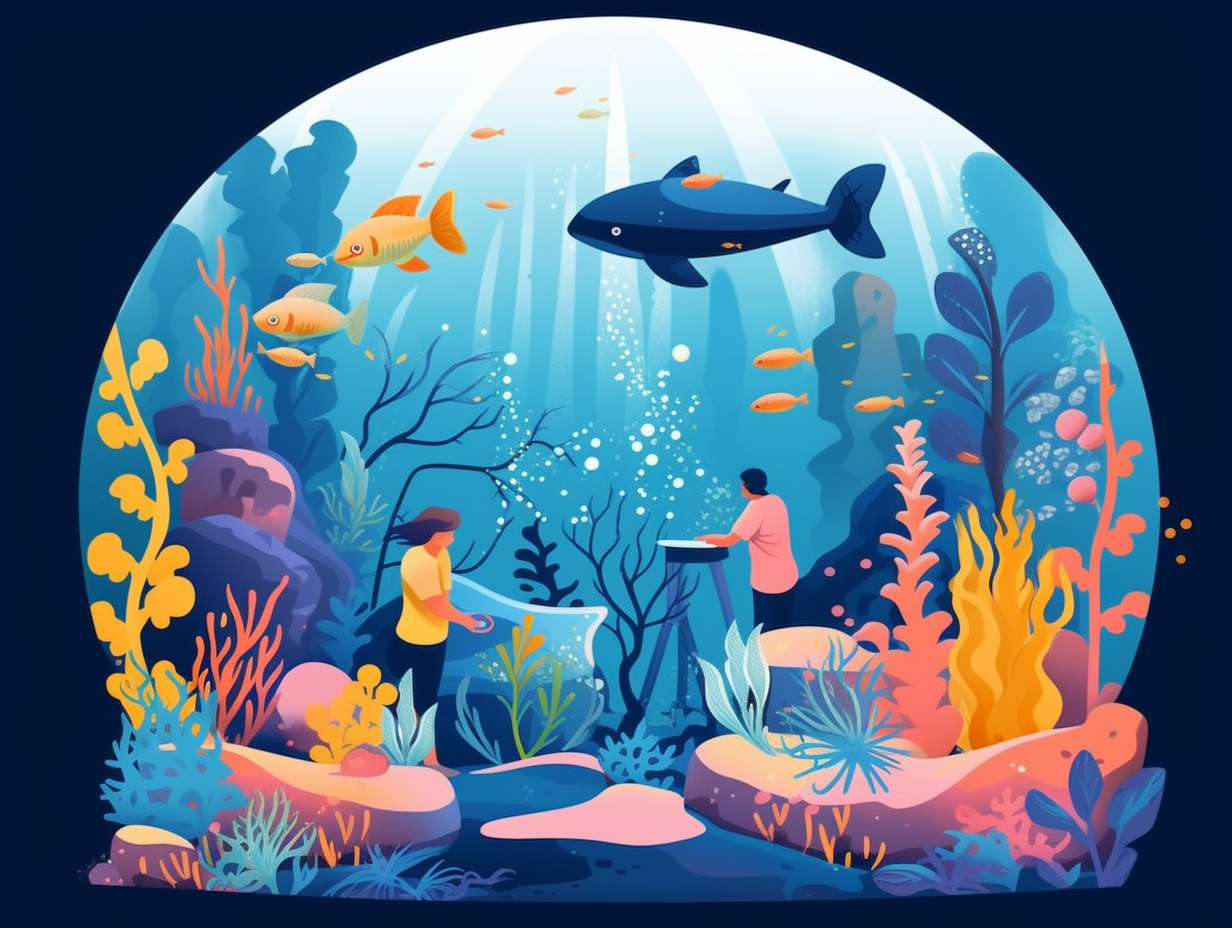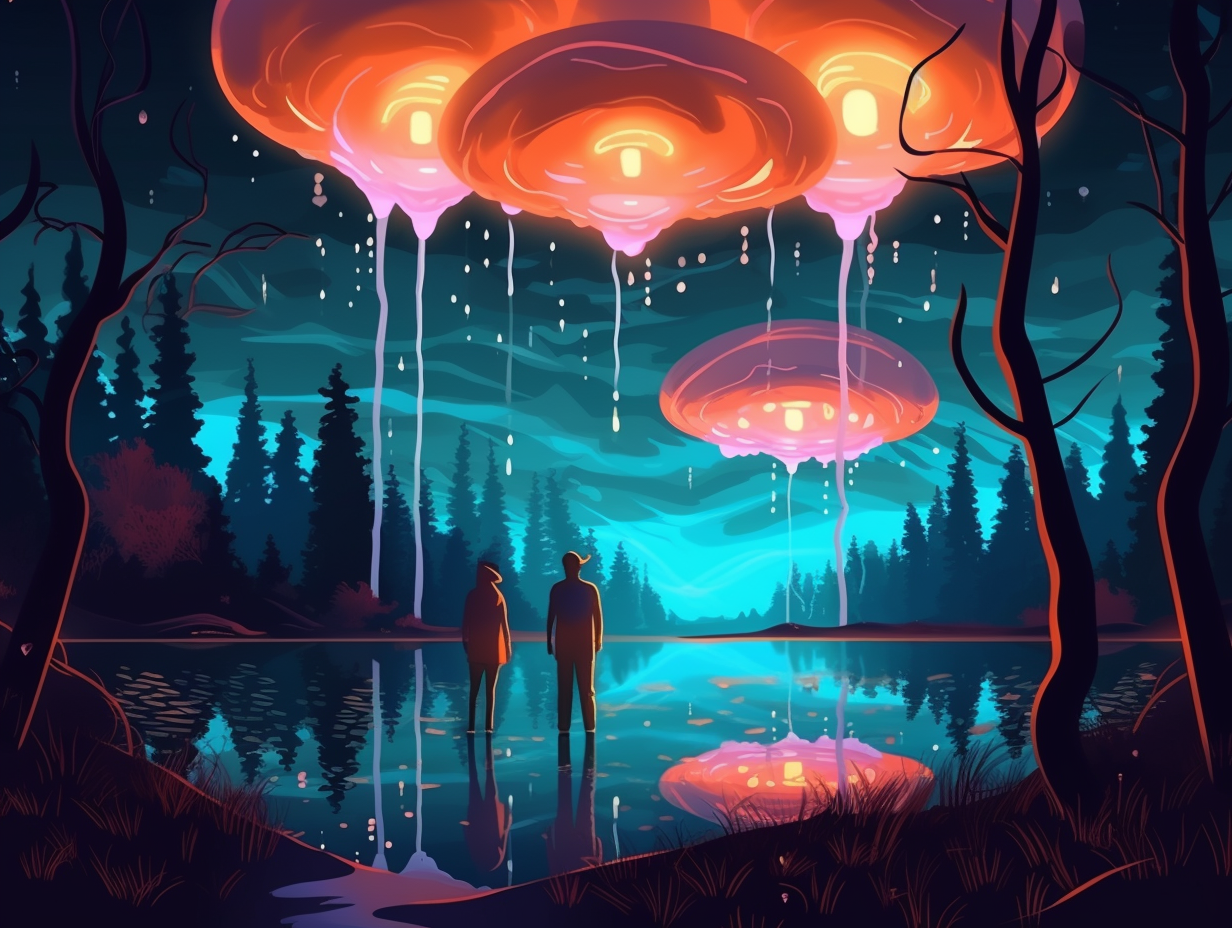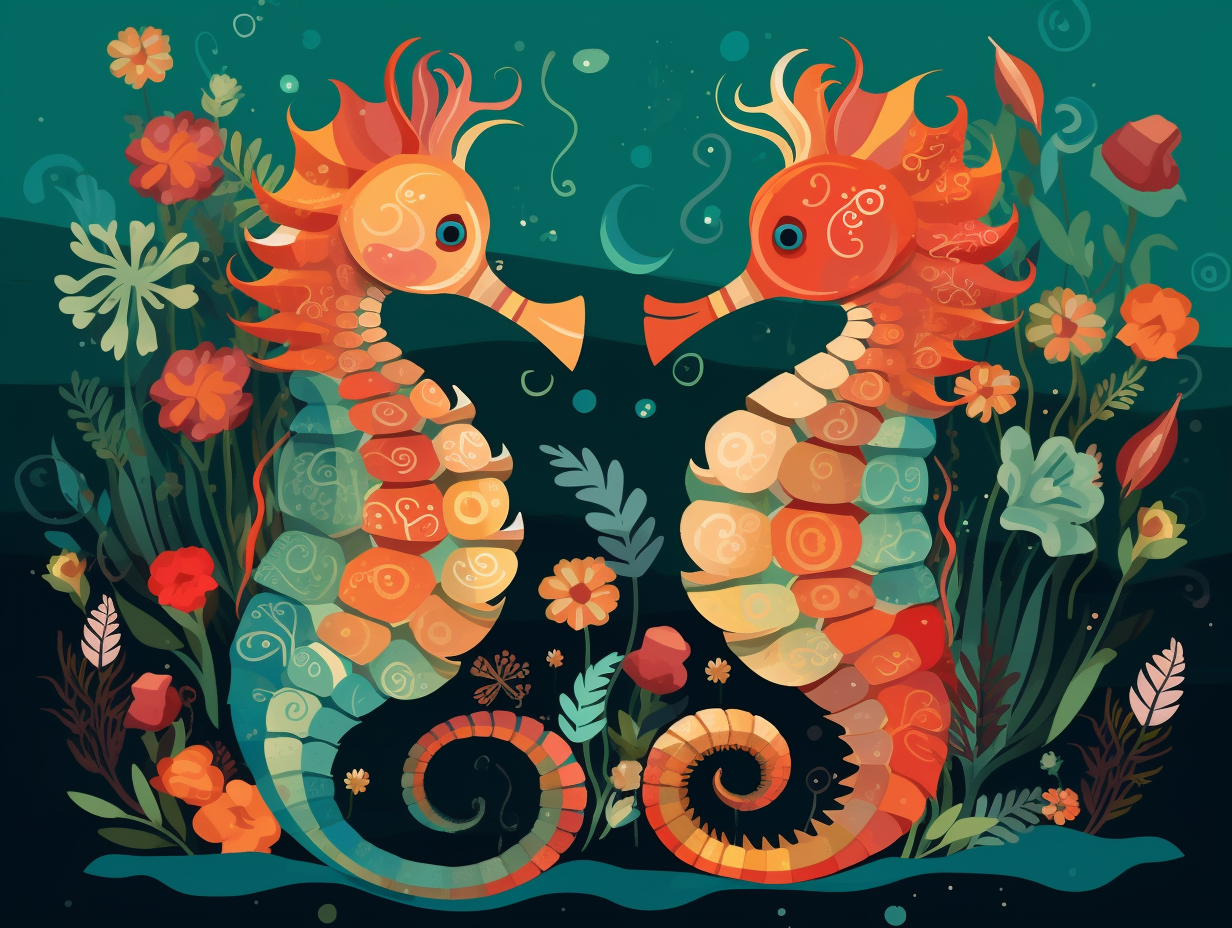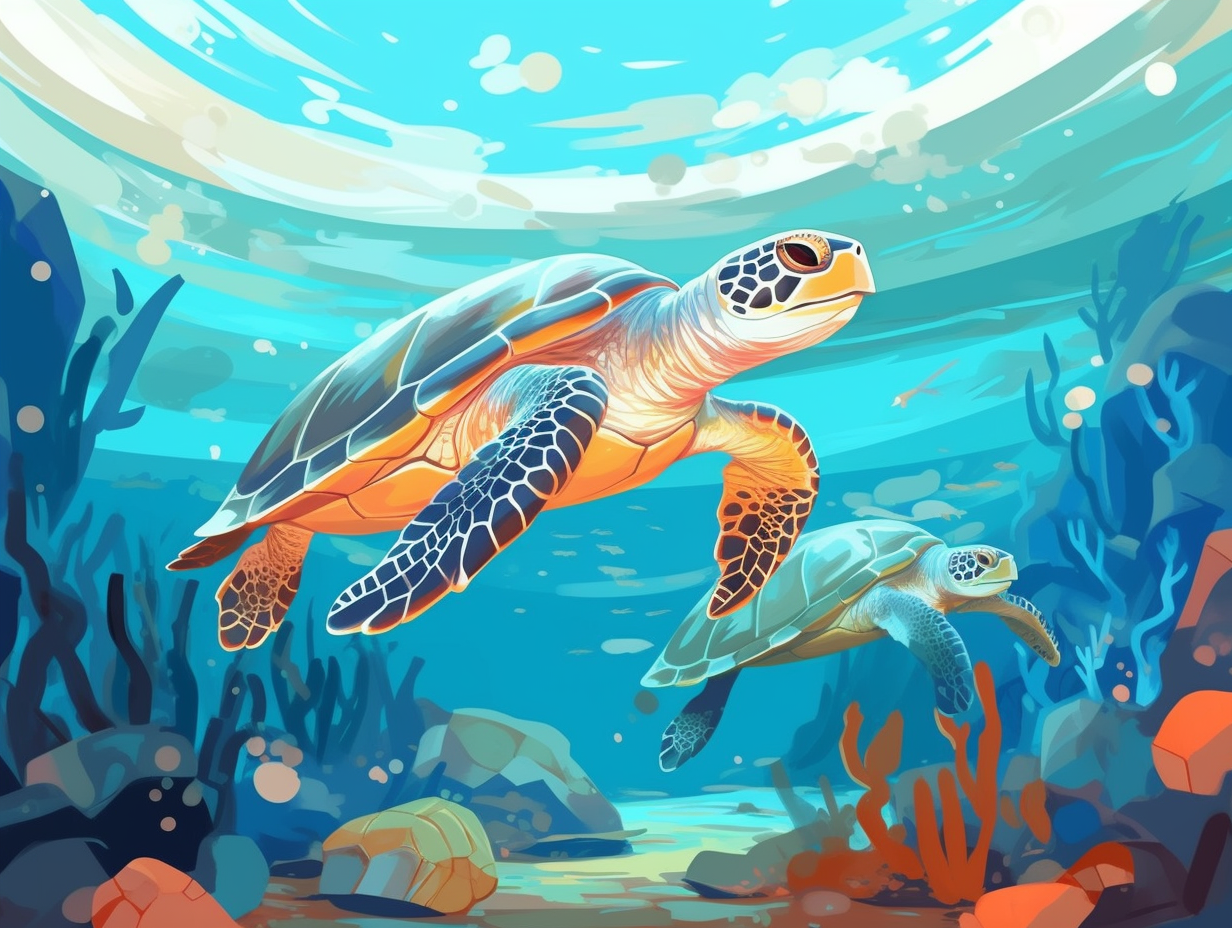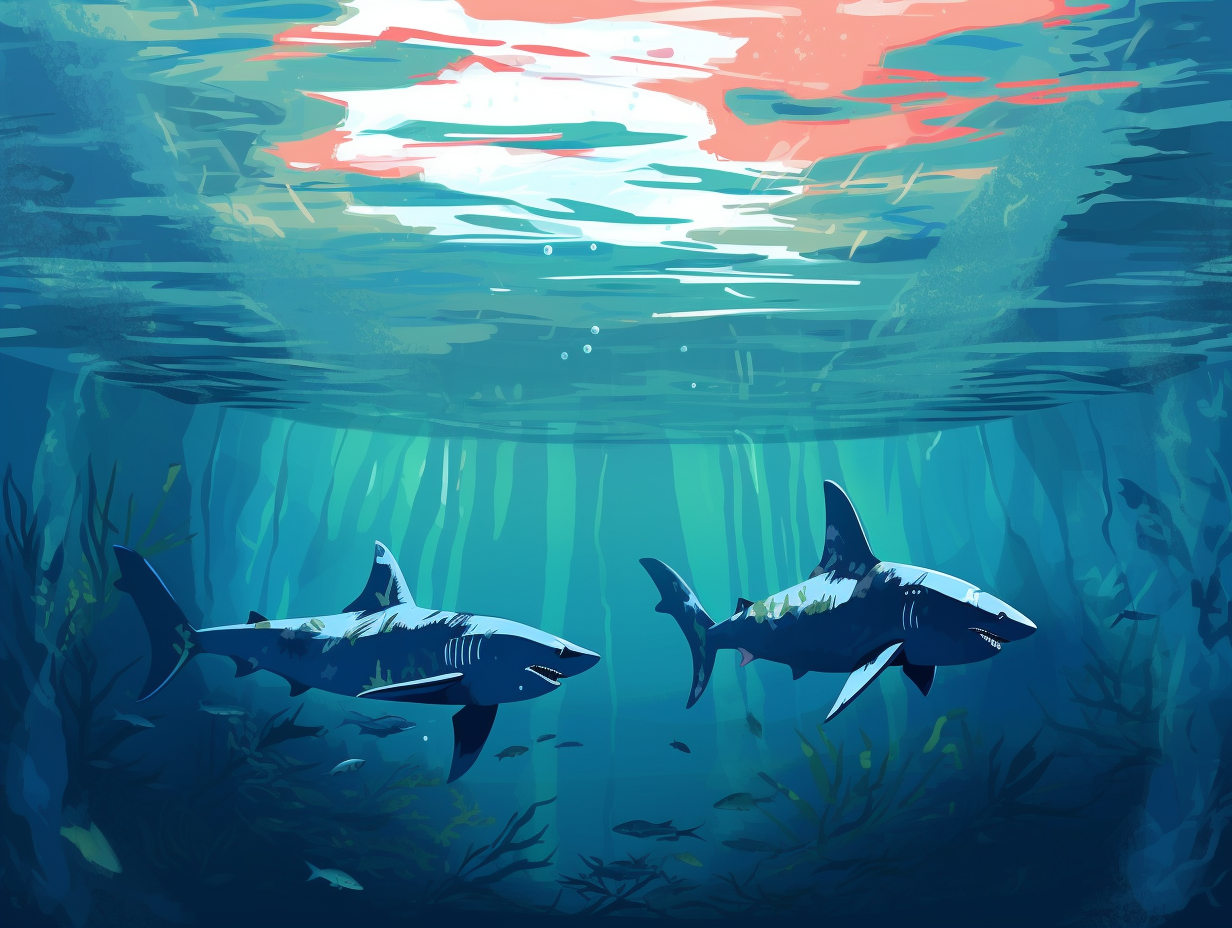13 Spooky and Spectacular Fun Facts About Vampire Squids You Need to Know

1. Sinister Squid Secret: They Just Want Snacks
Don't be alarmed by their slightly sinister social media profile, these deep-sea dwellers are simply looking for a little warmth and, of course, the occasional bioluminescent snack: The vampire squid, also known as Vampyroteuthis infernalis or "vampire squid from hell," is actually not a squid at all, but a rare species with its own distinct classification, and its fearsome name belies a penchant for survival in low-oxygen environments, thanks to a unique protein called hemocyanin.
Source => phys.org
2. Envy-Inducing Eyes of the Deep
Feeling a bit envious of the size of your neighbor's binoculars? Look no further than the envy-inducing vampire squid: with proportionately the largest eyes in the animal kingdom, this fabled creature glides effortlessly through the darkest depths of the ocean where mere mortals would get lost.
Source => aquariumofpacific.org

Did you know that squids can become nearly invisible? 🦑 Scientists have combined their color-changing abilities with graphene to create a potential dynamic camouflage clothing that even James Bond would envy. Discover how squids are revolutionizing stealth technology!
=> Fun Facts about Squids
3. Big Eyes for a Spooky Sea Darling
You know what they say about squid with big eyes, right? The better to see you with, my deep-sea darling: The vampire squid flaunts the largest eyes proportional to its body size of any creature on earth, glowing red or blue depending on the lighting - an eerie adaptation to thrive in the pitch-black ocean depths.
Source => aquariumofpacific.org
4. Flashy Horror Shows, No Blood Required
Dracula's deep-sea cousins don't suck blood, but they sure know how to put on a flashy horror show: Vampire squids ward off predators by flipping their spiny capes over their bodies, masking their natural lights, and unleashing a dazzling cloud of glowing blue mucus orbs that linger for 10 spooky minutes, giving them ample time to ghost their enemies.
Source => en.wikipedia.org
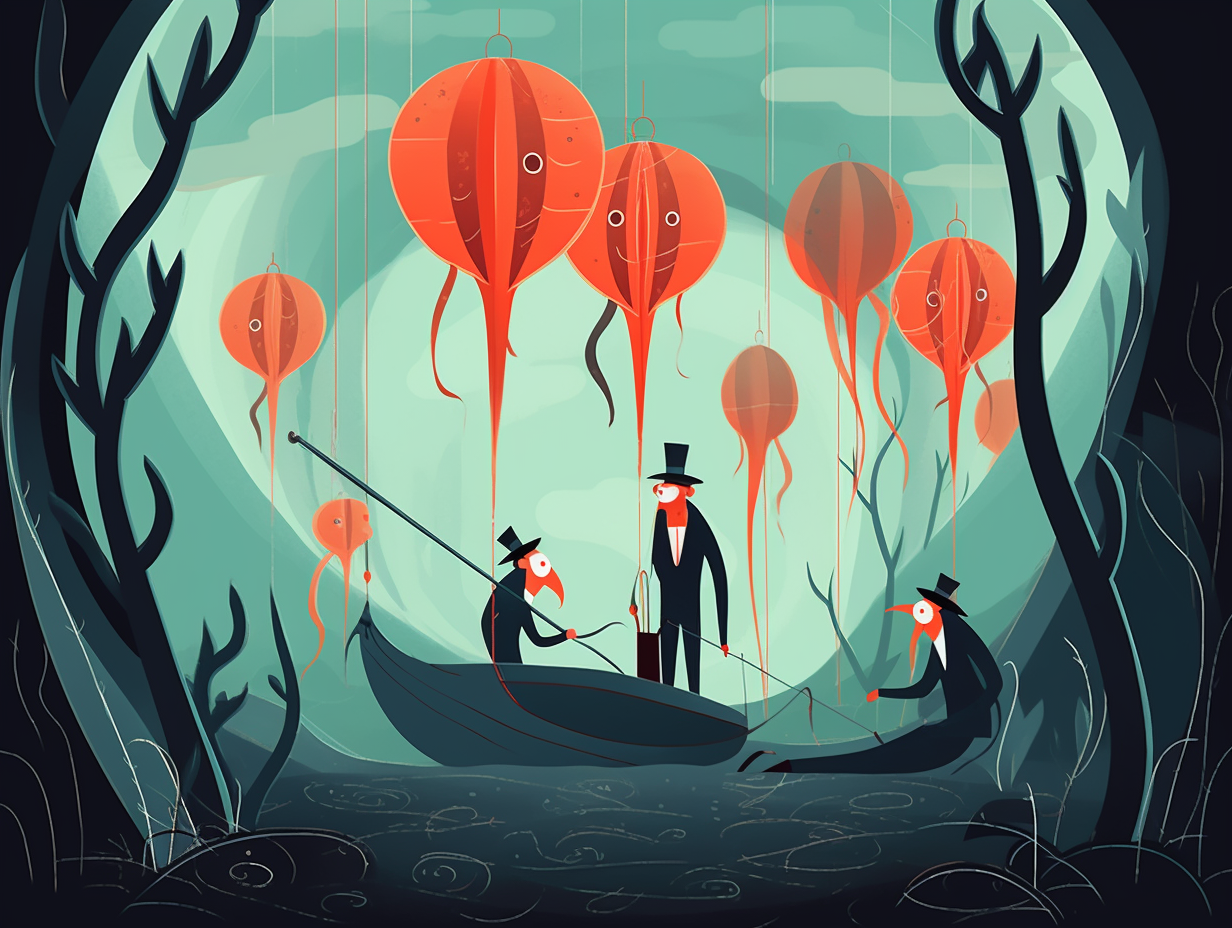
5. Spiky, Glowing Ocean Draculas
Contrary to popular blood-sucking belief, the coffins of Count Dracula and his ferocious fanged squid-kin are yet to be discovered: Vampire squids are actually deep-sea cephalopods that turn themselves inside out to reveal spiky tentacles like vampire teeth, using bioluminescent flashes to scare away predators in the dark abyss rather than haunting Transylvanian castles.
Source => montereybayaquarium.org
6. Deep-Sea Rave: Squid Style
When vampire squids aren't busy avoiding garlic and sunlight, they are lighting up the deep sea with their very own rave parties: These fascinating creatures have a unique system of photophores and photoreceptors that allows them to produce awe-inspiring bioluminescent displays for camouflage, communication, and luring prey, setting them apart from other lesser-glowing cephalopods.
Source => en.wikipedia.org
7. Sticky, Glowing Party Favors for Predators
Vampire squids have a hilarious way of giving predators the ultimate "sticky situation" with a dazzling, glowing party favor that rivals even the fanciest fireworks: They can eject sticky, bioluminescent mucus from their arm tips, creating a bright blue cloud that both traps and makes the predator more visible to others, ensuring a brilliant escape while the enemy is left to deal with the consequences of crashing this underwater light show.
Source => en.wikipedia.org
8. Oxygen-Zone Living Fossil
Dracula's got nothing on this squid: The vampire squid, nicknamed the "living fossil," prevails as the sole survivor of its order thanks to its remarkable adaptation to low oxygen environments. Uniquely, this cephalopod performs its entire life cycle in the deep sea's "oxygen minimum zone," a place where most organisms couldn't fathom hanging their hats due to its low oxygen concentrations.
Source => en.wikipedia.org
9. Ocean's Slime-Slinging Escape Artist
Move over Spider-man, because there's a new web-slinger in town who prefers oceans deep to skyscrapers high, and can out-slime even the greenest of Nickelodeon shows: The vampire squid dazzles predators with its shiny, sticky mucus ejection and baffles them by showing off its spiky-but-harmless tentacles via an elegant body inversion, proving that survival in the deep sea takes more than a little pizzazz.
Source => everywherewild.com

10. Innocuous Underworldly Diner
Bram Stoker meets Jacques Cousteau: the twisted love child of their fictional union is the vampire squid, which, despite its underworldly name, dines on a humble diet of "marine snow" with its sticky filaments in the dark abyss of the ocean, and has little to do with being a blood-sucking menace. Simply put: it's the friendly, deep-sea neighbor that shies away from trouble and lives an innocuous life in low-oxygen waters.
Source => ocean.si.edu
11. Disappointing, No Blood-Sucking Here
Dracula's disappointing sidekick: Vampire squids may bear the sinister name, but they forgo the blood-sucking tendencies of their mythical counterparts, feasting instead on a smorgasbord of tiny invertebrates - little prawns and copepods - and occasionally becoming a meal themselves for seals, whales, and larger fish.
Source => seasky.org
12. The Ultimate Sperm-Banking Squid
Who needs a bank when you've got built-in sperm vaults? The female vampire squid is no ordinary depositor: They possess specialized pouches for storing the little swimmers until it's egg-releasing time. This master of marine maternity can spawn multiple batches in her lifetime, ranging from 6,000 to 20,000 eggs per round. But wait, there's more: Their reproductive organs switch to a dormant, energy-saving mode between reproductive cycles – an unprecedented trait among their fellow soft-bodied cephalopod kin.
Source => mbari.org
13. Record-Breaking Eyespots: Squid Edition
Move over, Marty Feldman, there's a new eye-con in town: The Vampire Squid boasts the largest eyes relative to its body size of any creature on Earth, with its 2.5 cm wide peepers earning a spot in the Guinness World Records, helping them navigate in the deep sea and spot prey with their monstrous, award-winning eyesight.
Source => carnegiemnh.org
Related Fun Facts


